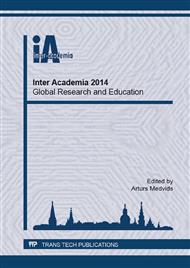p.241
p.245
p.249
p.254
p.261
p.265
p.269
p.273
p.277
A Hybrid Fuzzy-RBFN Filter for Data Classification
Abstract:
In this paper, a new filter network is presented that is based on Radial Base Function Networks (RBFNs). The output layer of the network is modified, in order to make it more effective in certain fuzzy control systems. The training of the network is solved by a clustering step, for which two different clustering methods are proposed. The suggested structure can efficiently be used for data classification.
Info:
Periodical:
Pages:
261-264
Citation:
Online since:
July 2015
Authors:
Price:
Сopyright:
© 2015 Trans Tech Publications Ltd. All Rights Reserved
Share:
Citation:


